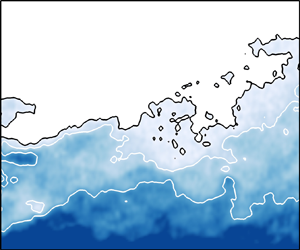Article contents
Generation and characterization of fully developed state in open channel flow
Published online by Cambridge University Press: 19 January 2022
Abstract

A fully developed approach flow is necessary in open channel studies to maintain commonality among datasets obtained from different facilities. Two-component planar particle image velocimetry is used to study the characteristics of fully developed smooth open channel flow at a constant Reynolds number of 3.9 × 104 based on the maximum velocity and flow depth. The near-bed boundary layer is tripped to achieve a fully developed state and compared with the under- and over-tripped cases. The Reynolds stresses and higher-order moments are used as indicators to establish the fully developed state. Flow properties are explored by identifying uniform momentum zones (UMZs) using the probability density function of streamwise velocities. The instances are grouped based on the number of UMZs (NUMZ) and conditional averaging of flow variables of each group is used to evaluate the difference in flow properties between the developed and the developing flow. Large-scale ejections are found in the logarithmic layer when NUMZ is higher, whereas a lower number indicates the existence of large-scale sweeping motions. The distribution of the conditionally averaged ratio of the shear contribution from ejections and sweeps and velocity deficits shows a vertical variability in the fully developed state. The large-scale and pointwise quadrant events are used simultaneously to depict variability in inner flow properties between developing and fully developed flow which cannot be recognized in the mean flow characteristics. The sweep events have much higher shear generation in the outer flow in the fully developed state whereas the shear stress contribution from ejection is lower than that in developing flow.
Information
- Type
- JFM Papers
- Information
- Copyright
- © The Author(s), 2022. Published by Cambridge University Press
References
- 17
- Cited by

